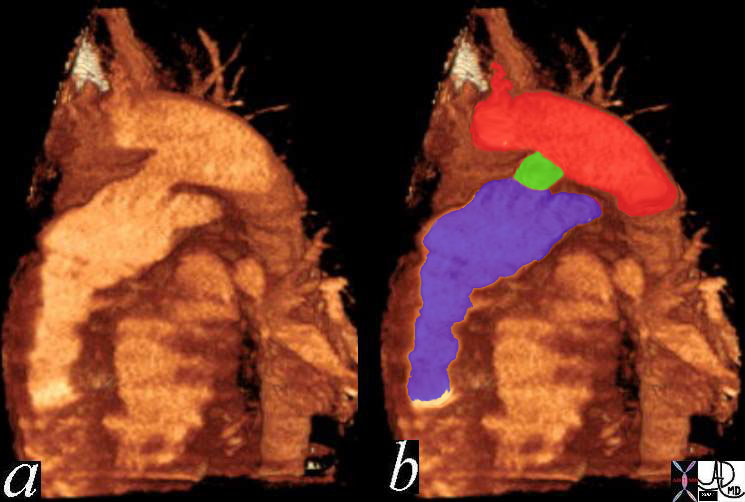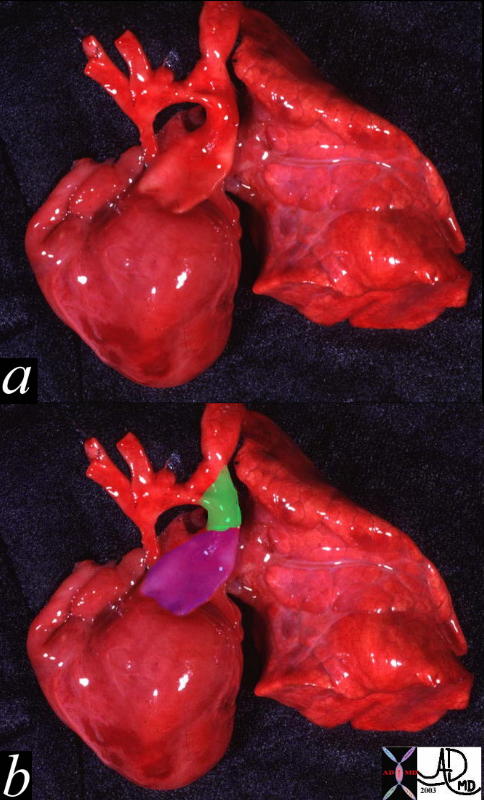| Patent Ductus Arteriosus
The Common Vein Copyright 2008 DefinitionPDA is a congenital persistence of an embryologic shunt between the left pulmonary artery and aorta at the level of the isthmus. This shunt is normal in the fetus allowing blood to be shunted away from the non functioning lungs. Blood is therefore directed from the pulmonary arterial circulation to the systemic circulation. A PDA is often patent in the neonate and is normal up to the age of 10days.
The abnormality may be an isolated abnormality or associated with other congenital defects. When associated with transposition of the great vessels for example, it is an essential and life sustaining shunt. When the PDA persists beyond the neonatal period, it results in a left to right shunt since in the postnatal period the pulmonary resistance and pressures are lower than the resistance and pressures of the systemic circulation. With the shunt, there is thus a volume overload on the pulmonary circulation. If left untreated pulmonary hypertension ensues.
The diagnosis is best made by hearing a continuous murmur at the left upper sternal border. Diagnosis is confirmed by echocardiography.
Treatment is first attempted using indomethacin. Minimally invasive options include balloon occlusion. Surgery is indicated if other methods fail or in the patient where a large shunt is present.
|

 Patent Ductus Arteriosus
Patent Ductus Arteriosus